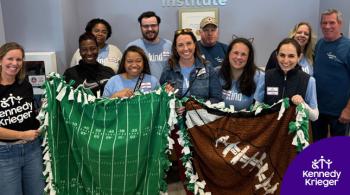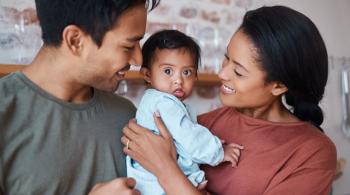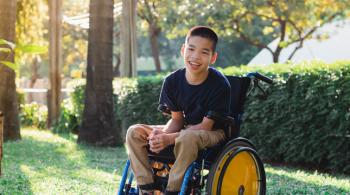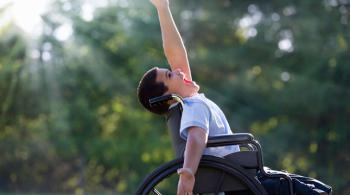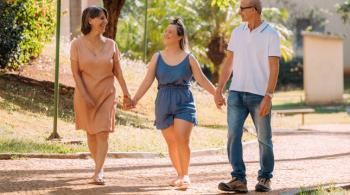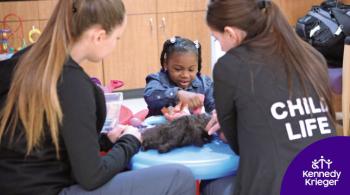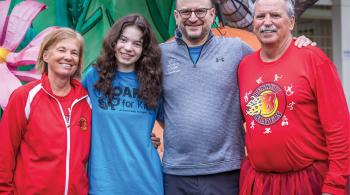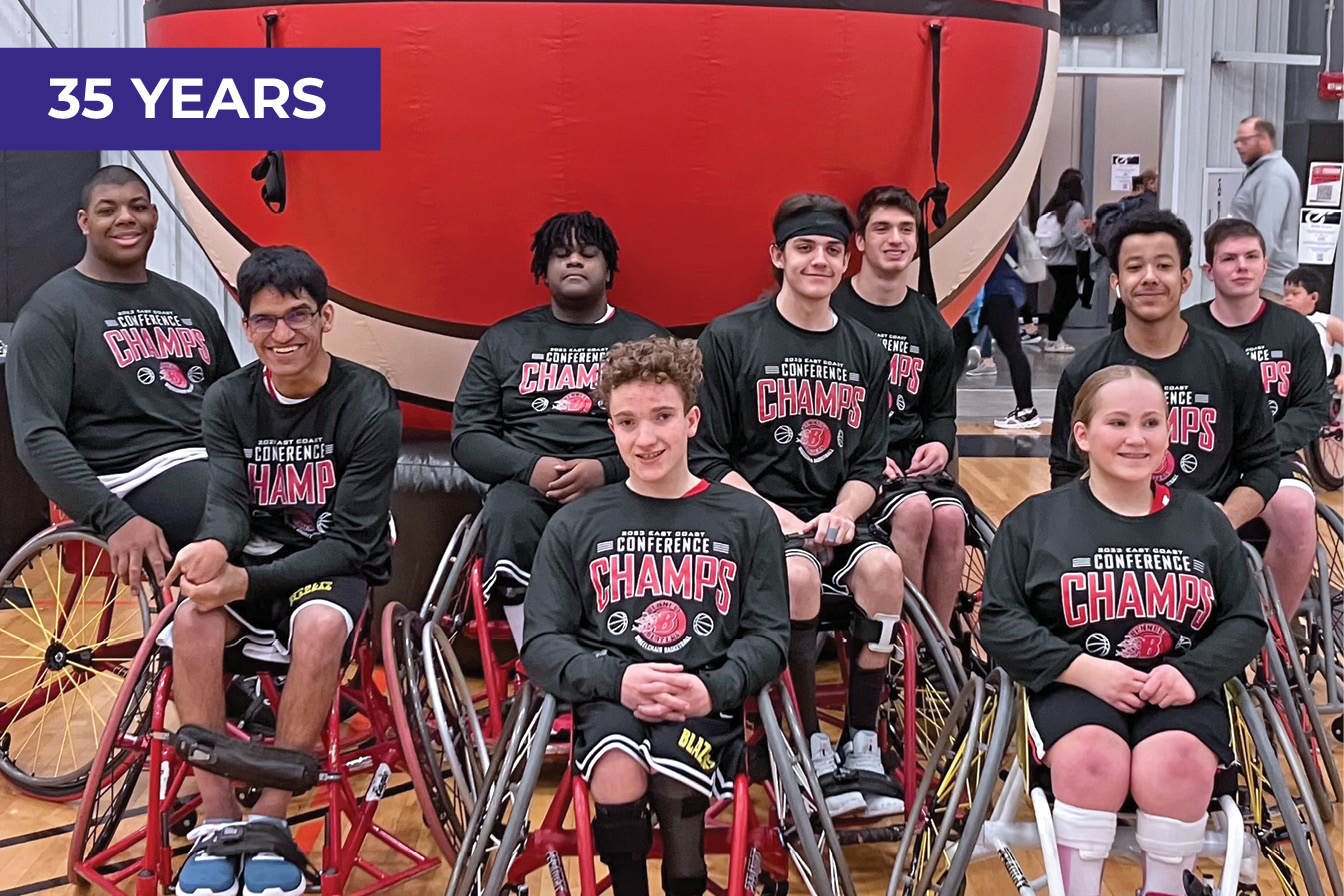
By Noah Baptiste
For the past 35 years, the Bennett Blazers adaptive sports program at Kennedy Krieger Institute has provided recreational and competitive opportunities to children with physical disabilities. The program’s motto—“Teach kids what they can do before someone tells them what they can’t do”—speaks to its primary focus of building confidence and perseverance through sports.
Co-Directors Gerry and Gwena Herman have effectively managed all areas of the Blazers since founding the program in 1990. It was Dr. Charles Silberstein, a former orthopedic surgeon at Kennedy Krieger, who recruited the Hermans to Baltimore. He had taken interest in a presentation they gave to the American Academy of Pediatrics about adaptive sports, and he knew he wanted to create a program at the Institute.
Initially, the Hermans worked with children ages 6 and up, teaching them a wide variety of adaptive sports, including basketball, soccer, swimming, tennis, and track and field. They quickly expanded the program to include children as young as 2, and added a motor skills development class to meet the needs of very young children. Today, the program serves 60 to 100 athletes ages 2 to 18 with physical disabilities each week. Athletes have gone on to compete at the collegiate level (often on athletic scholarships) and beyond—the program has launched the Paralympic careers of half a dozen athletes.
I was so shocked to see kids like me competing, and I loved every second of it.” – Logan
The Hermans love having the opportunity to make a positive impact on kids’ lives through sports. “The best moments are when kids accomplish a task they’ve been working on for a long time, or even a task that scared them at first,” Gwena says. “Witnessing team success is always exciting, but for us, it’s truly the small victories that bring the greatest reward.”
In the beginning years of the Blazers, there were few other multi-sport adaptive programs accepting children under age 10 in the Mid-Atlantic region, so the Hermans took initiative to reduce limitations outside of Baltimore. “We helped lead the way in the development of programs in New Jersey, New York, Pennsylvania and Virginia,” Gerry says.
Recent years have seen new programs emerge and increased youth participation, a trend the Hermans want to see continue. “Adaptive sports need to continue growing to reach the populations that are still excluded or marginalized,” Gerry adds.
When Logan, 19, discovered the Bennett Blazers at age 9, it changed everything for him. “I was so shocked to see kids like me competing, and I loved every second of it,” he says, recalling his first day with the program.
Logan is now an athlete in wheelchair basketball at the University of Missouri. He attributes much of his personal growth to his time with the Blazers. “I’m just as capable as anyone else. The only thing that could hold me back is my mentality,” Logan says, sharing what he learned during his time with the Blazers.
The positive impact doesn’t end with the athletes, though, as their parents are also guided and supported through the journey. “Gerry and Gwena made us realize that our daughter could do much more than we previously thought,” says Darryl Robbins, whose daughter Liza, 16, has been with the Blazers for 10 years.
As the Bennett Blazers celebrate their 35th anniversary, the influence they’ve had on adaptive sports cannot go unnoticed. They’ve proved that with enough support, every child can discover their full potential through sports.
Did you know? 60+ athletes are currently enrolled in the Bennett Blazers.
Photo caption: Recent members of the Bennett Blazers wheelchair basketball team include Logan (center, wearing a black sports headband) and Liza (front right)


